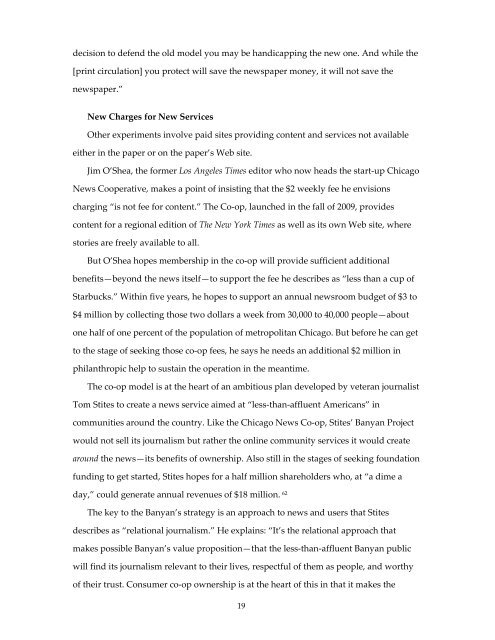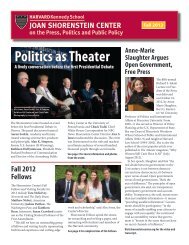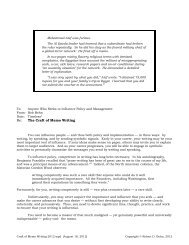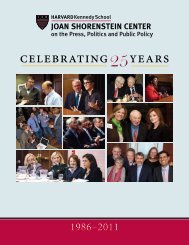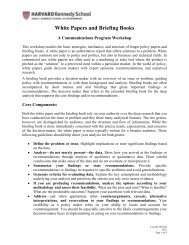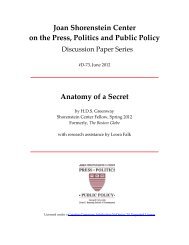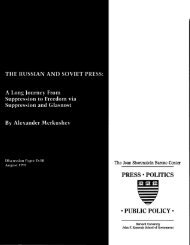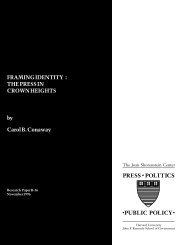A User-First Framework for Sustaining Local News - Harvard ...
A User-First Framework for Sustaining Local News - Harvard ...
A User-First Framework for Sustaining Local News - Harvard ...
You also want an ePaper? Increase the reach of your titles
YUMPU automatically turns print PDFs into web optimized ePapers that Google loves.
decision to defend the old model you may be handicapping the new one. And while the<br />
[print circulation] you protect will save the newspaper money, it will not save the<br />
newspaper.”<br />
New Charges <strong>for</strong> New Services<br />
Other experiments involve paid sites providing content and services not available<br />
either in the paper or on the paper’s Web site.<br />
Jim O’Shea, the <strong>for</strong>mer Los Angeles Times editor who now heads the start‐up Chicago<br />
<strong>News</strong> Cooperative, makes a point of insisting that the $2 weekly fee he envisions<br />
charging “is not fee <strong>for</strong> content.” The Co‐op, launched in the fall of 2009, provides<br />
content <strong>for</strong> a regional edition of The New York Times as well as its own Web site, where<br />
stories are freely available to all.<br />
But O’Shea hopes membership in the co‐op will provide sufficient additional<br />
benefits—beyond the news itself—to support the fee he describes as “less than a cup of<br />
Starbucks.” Within five years, he hopes to support an annual newsroom budget of $3 to<br />
$4 million by collecting those two dollars a week from 30,000 to 40,000 people—about<br />
one half of one percent of the population of metropolitan Chicago. But be<strong>for</strong>e he can get<br />
to the stage of seeking those co‐op fees, he says he needs an additional $2 million in<br />
philanthropic help to sustain the operation in the meantime.<br />
The co‐op model is at the heart of an ambitious plan developed by veteran journalist<br />
Tom Stites to create a news service aimed at “less‐than‐affluent Americans” in<br />
communities around the country. Like the Chicago <strong>News</strong> Co‐op, Stites’ Banyan Project<br />
would not sell its journalism but rather the online community services it would create<br />
around the news—its benefits of ownership. Also still in the stages of seeking foundation<br />
funding to get started, Stites hopes <strong>for</strong> a half million shareholders who, at “a dime a<br />
day,” could generate annual revenues of $18 million. 62<br />
The key to the Banyan’s strategy is an approach to news and users that Stites<br />
describes as “relational journalism.” He explains: “It’s the relational approach that<br />
makes possible Banyan’s value proposition—that the less‐than‐affluent Banyan public<br />
will find its journalism relevant to their lives, respectful of them as people, and worthy<br />
of their trust. Consumer co‐op ownership is at the heart of this in that it makes the<br />
19


